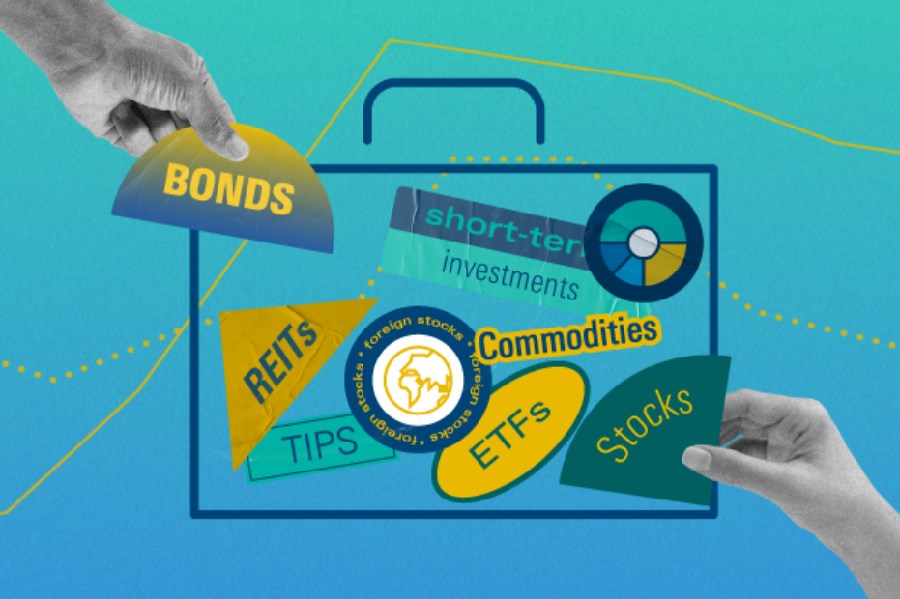Christine Benz: Hi, I am Christine Benz for Morningstar.com. Some of the most important recent research in the realm of retirement planning has been in the area of asset allocations during retirement. Joining me to discuss his research in this area is David Blanchett. He is Head of Retirement Research for Morningstar Investment Management.
David, thank you so much for being here.
David Blanchett: Thanks for having me.
Benz: David, let's start with the standard in retirement glide path that calls for ever declining stakes in stocks as the years go by. Let's talk about kind of the fundamental thesis behind doing that.
Blanchett: Sure. So a glide path is how the allocation to stocks changes over time, and I think most people, they think about glide path, think about accumulation, right, things like target-date funds where if you are, say age 25, you are in mostly stock and as you approach retirement, it becomes more conservative.
There has been an ongoing question about how do you allocate in a portfolio during retirement. So should the portfolio become more aggressive or more conservative and the consensus has really kind of been that it should be more conservative as you age, and so a great heuristic is 100 minus your age, right. So that's your target equity allocation. So if you are 65 years old, 100 minus 65 is 35% in stocks.
Recently, though, we've seen some discussion about, is it increasing or decreasing, and I think that basic economic theory would suggest that people should allocate their portfolios like a completion portfolio. So how risky is your other assets, and so when you're younger, you have a lot of human capital. Human capital is very bond like; and so that kind of gives credence to the idea of having a more conservative glide path and accumulation, there is obviously a bigger debate though about retirement.
Benz: Okay. So, you alluded to the fact that there has been some recent research, Michael Kitces and Wade Pfau took a look at whether retirees ought to start out with fairly light equity weightings and then ramp them up over time. Let's discuss kind of the fundamental underpinning, what they're trying to get at by having retirees come into retirement with a pretty light equity stake?
Blanchett: Sure. So when you first retire, you are subject to what's called sequence risk, which is where the initial returns are very impactful on the results of your eventual retirement and your success. And so one school of thought is that, hey, you want to be conservative early to kind of minimise the impact of sequence risk. Another rule of thought would be that, well, you need to actually do well early in retirement, especially today given the fact that returns are so low. And so, given those two kind of competing thoughts, how do you create the right allocation to last 30 plus years of retirement.
Benz: So one follow-up question to this idea of sequencing risk. If retirees have appropriately asset allocated portfolio, so if they have enough cash and enough bonds to get them through maybe sort of a catastrophic equity market return in their retirement early years, shouldn't that help sort of obviate concerns over sequencing risk?
Blanchett: It does, and so that’s kind of the idea like a bucket strategy...
Benz: Exactly.
Blanchett: … where you are allocating certain parts of your portfolio to different years of retirement; and I think that that's definitely the case. But in reality, if you do have that cash net fixed bucket and market sort of go down and you spend all that cash and bonds, you mainly have equities left. And so, like, my thing with buckets is that it's an excellent behavioural way to view portfolios, but in reality, you can cut up any portfolio into as many buckets as you'd like to.
Benz: Okay. So let's talk about your most recent research on the topic, some of the variables that you looked at to help determine what is the best glide path. What did you do in your most recent work?
Blanchett: Well, so today retirees are really in a difficult place, okay. Right now at a very unique time in history versus the last, say, 130 years of the U.S. stock market and bond market, where yields are very low. Bond yields on 10-year treasury is about 2%-ish and the market valuation based upon the Shiller P/E is very high. So the expectations today for both bond returns and stock returns is very low.
And if you combine these two variables together, it does suggest that maybe a decreasing glide path that becomes more conservative in retirement is better than a rising glide path; but in the grand scheme of things, the differences aren't that great, whether you have kind of a constant, static allocation or an increasing or decreasing glide path.
Benz: So it sounds like my own comfort level with this setup is kind of an essential ingredient here?
Blanchett: What really is – and one thing that my model totally excludes is your preference for risk. These are all models built upon what best helps you accomplish the goal or how do you feel about risk in retirement. If you are like most people, as you age, you want to be more conservative in your portfolio; and I think that kind of further lends credit to the idea that you should be more conservative as you age in retirement.
Benz: Okay. How about the keep it simple approach, where rather than adapting any sort of glide path that's going up or down, maybe I just go 60% equity, 40% bond or 50-50 and then just rebalance back to that target?
Blanchett: That’s I think an excellent strategy, and actually Michael and Wade noted the same thing, that it's really hard to beat a good balanced portfolio.
Benz: Okay. David, thank you so much for being here. This is such an important area. I know it's top of mind for a lot of retirees.
Blanchett: Thanks for having me.
Benz: Thanks for watching. I'm Christine Benz for Morningstar.com.





















